According to Cooper Quintin, a staff technologist at the Electronic Frontier Foundation, the landscape of data consumption has evolved significantly; an increasing amount of our information now flows through web browsers. This shift brings with it heightened vulnerabilities—if your browser were to fall prey to malicious attacks, a wealth of personal data could be jeopardised.
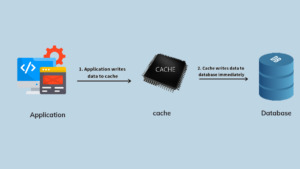
To fortify the security of your desktop browser and protect what matters most in this digital age, experts suggest implementing several key strategies. These proactive measures can help ensure that your online life remains just as secure as your physical belongings.
In the vast digital landscape where we navigate daily, one crucial piece of advice echoes through the corridors of cybersecurity: keeping your web browser current is not just a suggestion—it’s a necessity. Quintin, a seasoned expert in the realm of online safety, emphasises this point with fervour. He explains that regardless of your preferred browser—be it Chrome, Firefox, Safari, or any other—the importance of having the most recent version cannot be overstated.

Picture this: every day, as you embark on your internet adventures, there are hidden dangers lurking in the shadows. Bugs and vulnerabilities are like tiny cracks in a fortress wall; they may seem insignificant at first glance but can become gateways for malicious attackers to exploit. These cyber adversaries are constantly on the lookout for outdated software that hasn’t been patched against known threats.
Quintin’s voice takes on a serious tone as he shares stories of those who have fallen victim to these attacks due to neglecting updates. “It’s like leaving your front door wide open,” he warns. “You wouldn’t do that at home, so why would you allow it online?”

To safeguard yourself from potential breaches and ensure a secure browsing experience, Quintin offers simple yet effective advice: make it a habit to restart your browser regularly. When you do so, keep an eye out for any prompts urging you to update; these notifications are not mere suggestions but vital alerts that protect you from lurking dangers.
So next time you settle down at your computer or pick up your device to explore the web, remember Quintin’s wisdom: staying updated isn’t just about convenience—it’s about fortifying your digital defences against an ever-evolving threat landscape.
Transforming Plug-ins into Click-to-Play Features
In the vast landscape of web browsing, plug-ins play a crucial role. These specialised software components are crafted to enhance specific functionalities of your online experience, such as enabling video playback. However, their complexity—often comprising extensive lines of code—means that they can also serve as gateways for malicious attacks. Cybercriminals frequently exploit these vulnerabilities to deploy malware or gain remote access to users’ devices.
Among the most recognized plug-ins are Java by Oracle, Silverlight from Microsoft, QuickTime developed by Apple, and Adobe’s Flash Player. The latter has gained a reputation for being particularly susceptible to serious security flaws that have plagued users over time.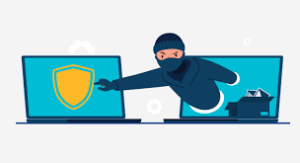
To shield yourself from potential threats posed by these plug-ins, you can adjust your browser’s settings to ensure an extra layer of protection. For instance, you could configure it so that each time a plug-in is about to run, you must grant explicit permission first. This way, you’re not allowing any unwanted or potentially harmful content to execute without your knowledge.
Additionally, many browsers offer options to block any plug-in content deemed unnecessary or suspicious outright. If there are specific plug-ins that cause you concern—like Flash—you can simply disable them altogether. Richard Barnes, the security lead at Mozilla Firefox, emphasises this strategy: By turning off Flash, he explains, you reduce your risk because it eliminates one more avenue through which attackers might strike.
However, it’s important to consider the trade-off involved in this decision; disabling certain plug-ins may prevent access to websites reliant on those technologies. Fortunately for users today, many sites have begun transitioning away from using Flash in recent years—a shift noted by Barnes—and Google has committed to phasing out support for Flash on Chrome across most sites by year’s end.

In this evolving digital environment where safety is paramount and threats loom large behind every click and interaction with online media and tools alike; making informed choices about how we use and manage our browser’s capabilities is essential for safeguarding our personal information and ensuring a secure browsing experience.
In the digital age, many website publishers have taken to monitoring the geographical whereabouts of their visitors. This practice allows them to gain insights into their audience, tailor advertisements based on location, and offer services like maps and directions that are relevant to users’ specific locales. However, this seemingly innocuous tracking can pose risks. A savvy remote attacker could exploit the combination of your location data and your online behaviour to create a clearer picture of who you are and where you live.
To combat this potential invasion of privacy, expert Quintin suggests a proactive approach: adjusting your browser settings so that it prompts you for permission every time a site requests access to your location. This simple change can significantly bolster your privacy, allowing you greater control over what information is shared. However, Quintin also cautions that this heightened security comes with a caveat—some websites may cease to function properly without automatic access to your location data. Thus, while taking steps toward safeguarding your personal information is wise, it’s essential to weigh the benefits against the possible inconveniences that may arise from such measures.
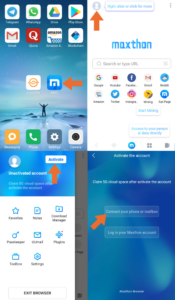
In today’s interconnected world, the security of our online privacy often takes a backseat to convenience. We might only remember the importance of our computer’s webcam and microphone when we’re using applications like Skype or Zoom. However, if your browser settings are not properly configured, you could unknowingly grant access to these devices without realising it.
Imagine a scenario where an attacker exploits a vulnerability on a seemingly trustworthy website. They can insert malicious code that activates your camera or microphone without your consent, allowing them to record you in secret. Quintin emphasises that this breach is a significant violation of personal privacy, one that could happen even on websites you frequently visit and trust.
To safeguard yourself against such intrusive threats, it’s crucial to take proactive measures. Adjust your browser settings so that any site requesting access to your mic or camera must first obtain explicit permission from you each time. By doing this, you add an essential layer of protection between yourself and potential intruders lurking in the digital shadows. Your privacy deserves vigilance; don’t let convenience compromise it.
Before you dive into entering your password on a website’s login page, take a moment to glance at the URL bar. Look for that reassuring HTTPS, accompanied by a small lock icon. This indicates that your connection to the site is encrypted and secure.
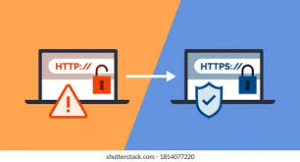
When you see HTTPS, it means that anyone attempting to eavesdrop on your connection will be thwarted. They won’t be able to capture what you type, including your precious passwords. This level of security is crucial, especially for sites dealing with sensitive information like banking or personal data.
But don’t stop there; consider taking an extra step for safety. Experts recommend enabling two-factor authentication (2FA) wherever possible. This additional layer of protection typically involves verifying your identity through an SMS code or an authenticator app.

By ensuring that only you can access your accounts, 2FA significantly reduces the risk of unauthorised access. As we navigate our digital world, being vigilant about these security measures can safeguard not just our accounts but also our peace of mind.
Maxthon
In the fast-paced world of today’s digital landscape, protecting your online banking details while navigating the Maxthon Browser has become increasingly important. Imagine yourself preparing for a journey into the vast realm of online finance, where every click holds the potential for both opportunity and risk. The first step on this journey is to forge robust passwords for your banking account—these should be intricate and distinct, weaving together uppercase and lowercase letters, numbers, and special characters in a way that makes them nearly impenetrable. Avoid using obvious choices like birthdays or pet names; instead, think creatively to construct a fortress around your financial information.

As you embark on this adventure, consider arming yourself with two-factor authentication (2FA) if your bank offers it. This powerful tool acts as an additional shield, requiring you to input a code sent via text or email alongside your password—like having a secret key that only you possess.
But even with strong passwords and 2FA in place, there’s more to do on this quest for security. Regularly updating the Maxthon browser is akin to sharpening your sword before battle; it ensures that you’re equipped with the latest security patches and enhancements designed to fend off potential threats lurking in the shadows. Just as one would clear their path of obstacles before proceeding forward, make it a habit to frequently purge your browsing history, cache, and cookies. This practice will help eliminate any sensitive data that hackers might exploit should they gain access to your device.
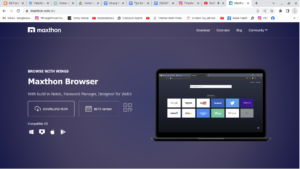
To further bolster your defences while managing online transactions, consider venturing into Maxthon’s privacy mode—a sanctuary where no traces of your browsing session are left behind. In this mode, you can roam freely without leaving cookies or site information scattered along the way.
As you navigate through this digital landscape, think about equipping yourself with reputable security extensions or antivirus plugins specifically designed for Maxthon; these tools act as vigilant sentinels against phishing attempts and malware threats that might try to ambush you unexpectedly.
Always remain watchful against phishing scams—they can be deceptive traps set by unscrupulous individuals seeking access to what’s rightfully yours. Before entering the sacred realm of your bank account login page, take a moment to scrutinise the website’s URL carefully. Be wary of any links purporting to be from your bank that arrive via emails or messages unless you’re absolutely certain they are genuine.
Finally, once you’ve completed all transactions within this digital domain—don’t forget one crucial step: log out of your online banking session! This simple yet effective action serves as a safeguard against unauthorised access should someone else use your device afterward.
By adhering closely to these guidelines throughout your journey with Maxthon Browser—each careful action taken will significantly enhance the safety of all online banking activities you undertake within its realms. With diligence and awareness at every turn, you’ll navigate through digital waters confidently while keeping potential threats at bay.
